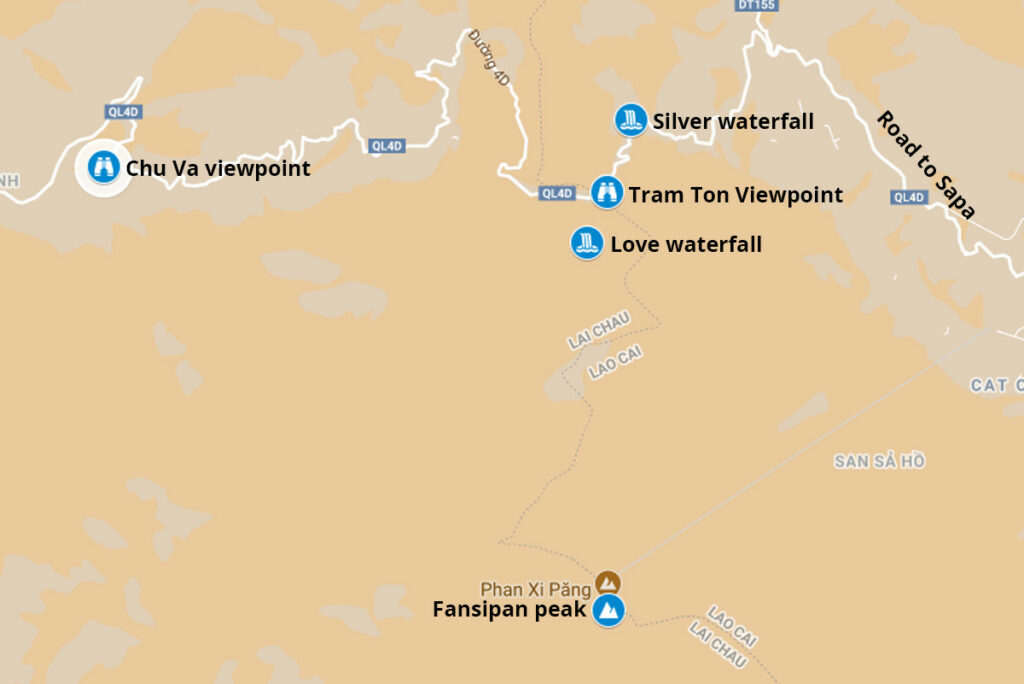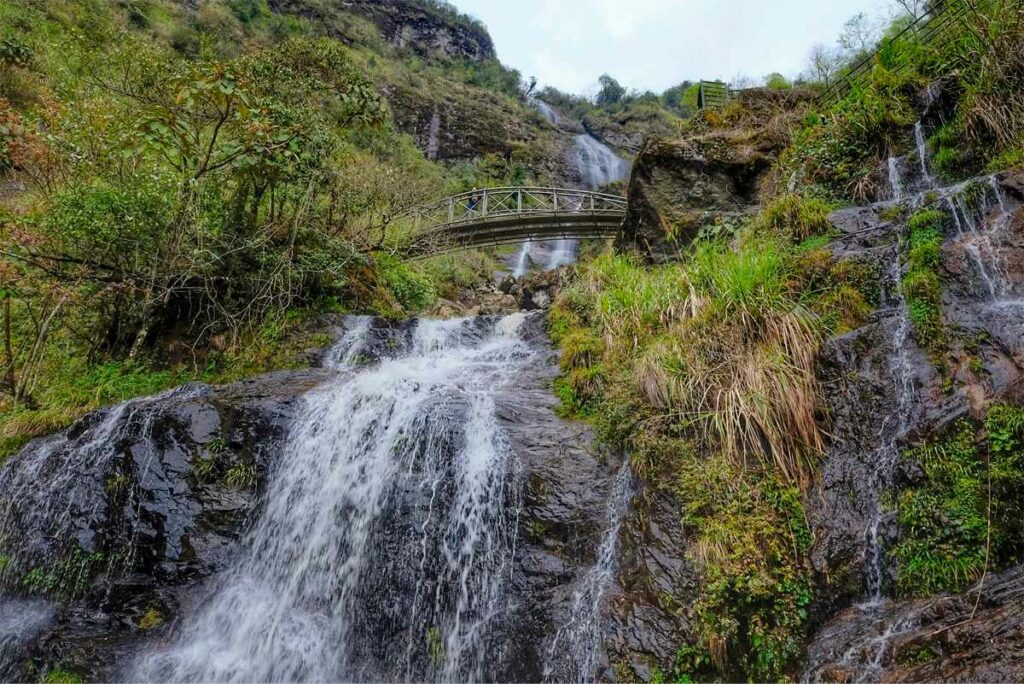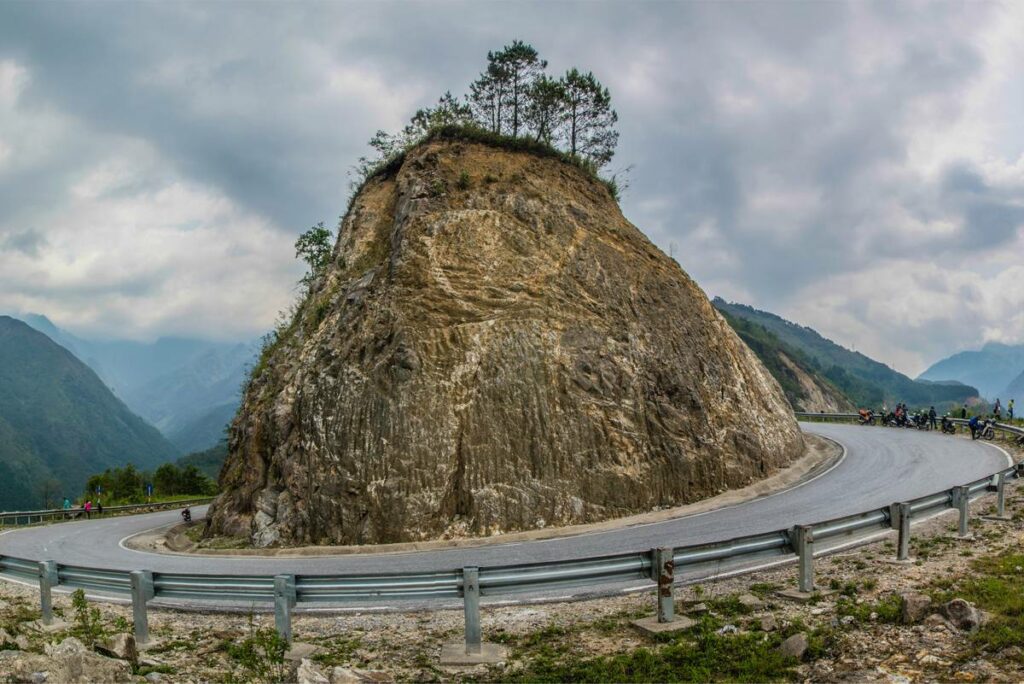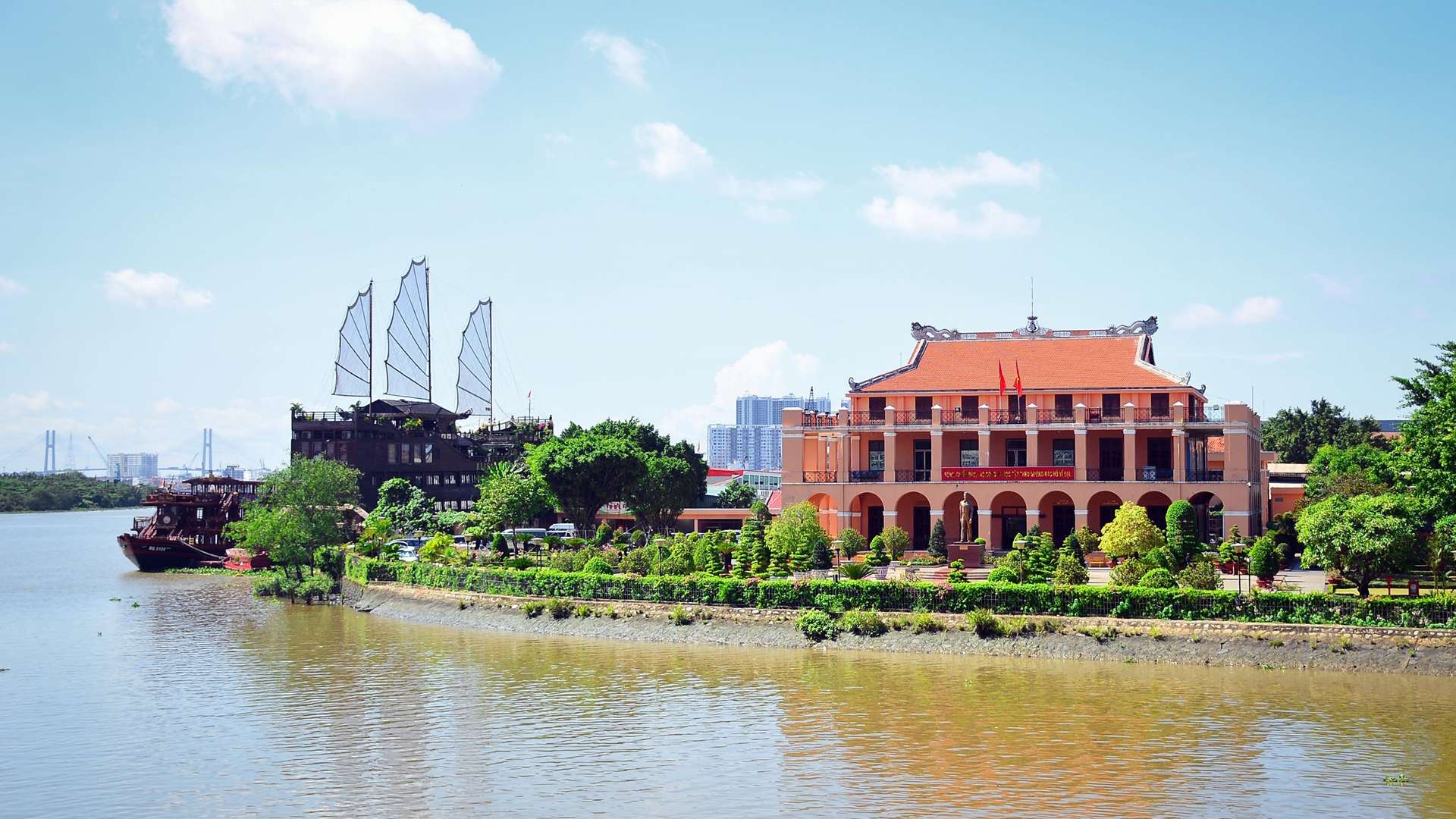Known as one of the Four Great Peaks of the Northwest of Vietnam, O Quy Ho Pass is the destination for people who like trekking. Even if you don’t like trekking, you will be able to fall in love with the pass for the first time because of this masterpiece of nature with a picture of a landscape that is so majestic and poetic. From the top of the pass, you will feel as if you are lost in a fairyland.

1. Where is O Quy Ho Pass
O Quy Ho pass is the largest and most beautiful pass in Sapa, also the longest pass in the Northwest. The pass is an important position to connect Lao Cai Province and Lai Chau Province. “O Quy Ho” is the name of H’mong woodcutter and came from a tragic love story. He fell in love with a fairy but they could not be together. The fairy turned into a bird that forever cried and called “O Quy Ho”. Since then, people here have used to name the pass.
O Quy Ho pass is located under Hoang Lien Son range, so the pass is also known as Hoang Lien pass. With an altitude of more than 2000m, craggy bends, and a length of up to 50km, O Quy Ho pass is known as the “king of four great peaks” of the Northwest ò Vietnam.
Which season is the most suitable time go to O Quy Ho Pass?
- In the summer: Summertime is always time to travel. In this season, the weather in O Quy Ho Pass and Sapa is almost cool, pleasant, slightly cold and less foggy. You will see the path clearly and it will be easier to go. We advise you should only go to the pass on the Lao Cai side, not on the Lai Chau side because the side on the Lao Cai side is more beautiful.
- In the winter: In the winter, the weather in Sapa and O Quy Ho Pass is so cool for foreigners. When the temperature is low, O Quy Ho is covered with snow, which attracts many trekkers to come here to check-in and take pictures.
- Otherwise, The most ideal time to check-in O Quy Ho pass is in the late afternoon when the sunset dyed red covering the entire Northwest region. Or you can also stay one night at Sapa hotel, then go on a morning hike to catch the sunrise in the early morning.
6 highlights of Tram Ton pass

1. Tram Ton Pass viewpoint
Tram Ton Pass is on the way between Sapa and Lai Chau. Even if you do not travel to Lai Chau or you do not have a plan to go further north-west, it is worthwhile to go to the top of the Tram Ton Pass and see the amazing view. There is a viewpoint here from which you have a great view of Fansipan on the other side of the valley with lush forests. The view is especially good to see on clear days. The best time to take photos is at sunset or dawn. At the lookout point you will find wooden buildings that are dangerously built on the outskirts, that sell souvenirs and food.

2. Spectacular scenery on the way
Where the road makes a final turn to the left from Sapa, the Tram Ton Pass starts with climbing more than a mile to the viewpoint. The ride is shorter than other famous passes in Vietnam such as Ma Pi Leng or Hai Van Pass, but on a clear day you have endless views. It is an easy route, but be careful for vans and tour buses. The views on the way are amazing, so you’ll often want to stop by for a photo or just enjoy.
3. Silver waterfall

The Silver Waterfall is the first waterfall along Tram Ton you will pas. It is right besides the road, so you can not miss it. The waterfall is around 200 meters high with several drops. For a small entrance fee you can climb the stairs next to it.
4. Love waterfall

The Love Waterfall is closer to the top and not right next to the main road. You need to take a 30 minute hike through the first with nice views on the way. The path is paved and signs indicate the directions. Because of the hike, a lot of tourist skip the waterfall, so it is more quiet than the Silver waterfall.
5. Chu Va viewpoint
What many travelers don’t know is that the you can keep following the road after Tram Ton Pass to enjoy a lot more scenic views of the mountains above you and the rice fields below. Most will stop on top of the pass and go back to Sapa. Twenty or thirty kilometers further from Tram Ton the road starts to turn up through the Hoang Son Lien mountain range, of which Fansipan is also a part. Continue heading to Lao Cai to have more superb views, with another highlight at Chu Va viewpoint. Chu Va is one of the highest peaks of the Lai Cau province.

Best time to visit
You can visit the Tram Ton Pass all year round. Keep in mind that during the winter months of December and January it can get quiet cold in Sapa. Make sure when you are planning to drive a motorbike by yourself to bring warm clothes. In the summer there is a lot more change on rain, so best to bring a rain jacket with you. Read here more about the best time to visit Sapa.
The pass is high up in the mountains, so there is always a good change that there are a lot of clouds, which will block some of the stunning views. The best time to take photos is at sunset or dawn. Make sure to check the weather forecast before you go out.







